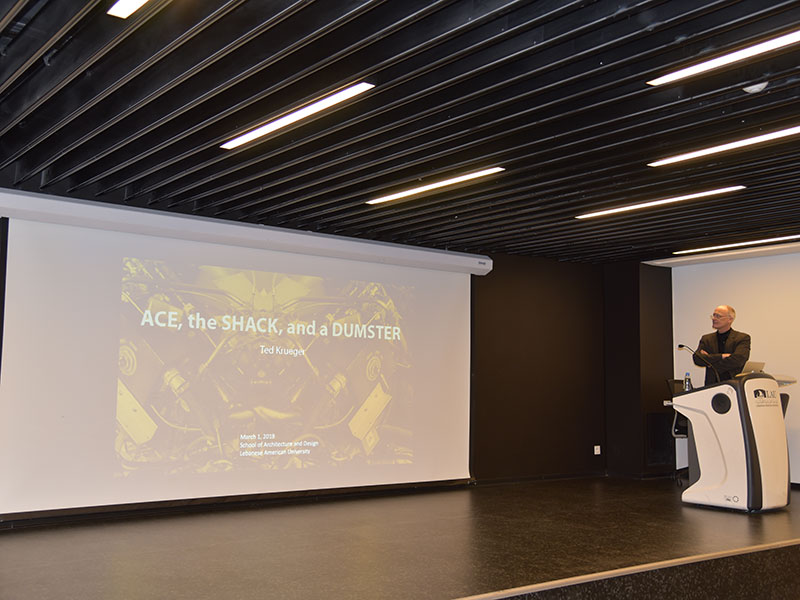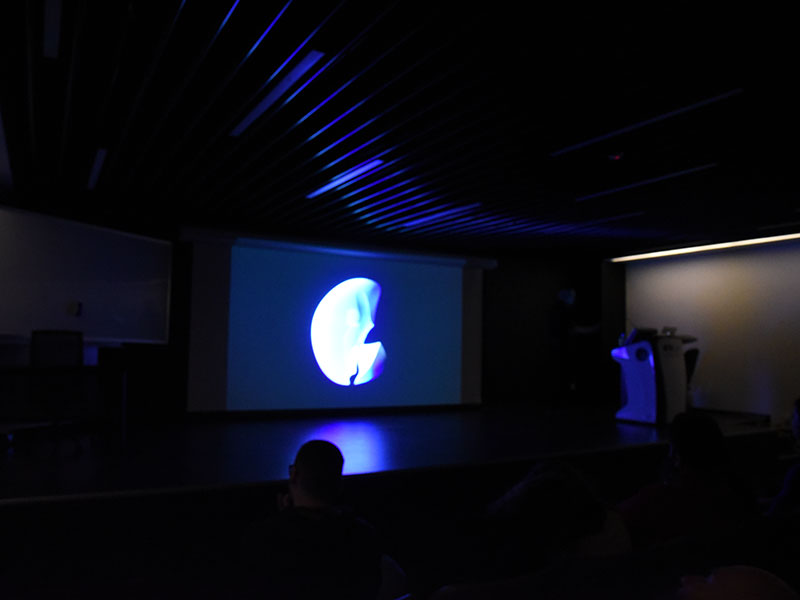Students Explore the Environment, Without Relying on Their Vision
Design Foundation students were asked this weekend to explore their environment without relying on their eyesight, during a workshop led by Ted Kruger, Associate Professor at the Rensselaer Polytechnic Institute.
On Saturday the students walked throughout the Beirut campus blindfolded and drew a visual representation of what they felt while inside the buildings. On Sunday, they were told to build a machine that could measure the flow of air.
While these tasks may seem unconventional, they were an ideal way to make the students consider “a whole realm of non-visual architectural phenomena,” Krueger said. The interaction of weather, sound, airflow and other non-visual factors with buildings, he continued, has major consequences for human comfort — but is far too often ignored.
“So what we’re trying to do is not to force the students to put these ideas into designs immediately, but to open their minds to the different possibilities that they might bring.”
Carol Farraji echoed those thoughts, saying that the workshop had given her a new appreciation of the subtlety and importance of the non-visual. “It made me see our campus in a whole different way.”
“Before I was hearing things without listening, or sensing the air without really knowing how to work with it… And if you don’t understand those factors you’ll end up with a really bad design. It’ll be a sculpture that no one can live in.”
These ideas are familiar to Krueger, whose career has in part been defined by his research into architecture and human perception. He gained prominence in the 1980s with his analogs on capitalism and urban expansion, before founding an architecture and robotics research lab at Columbia University and a visualization laboratory at the University of Arkansas. His latest work includes a laboratory for Human-Environment Interaction research and devices which make users feel unique, new senses. He summarized that work at the lecture he gave on Friday evening.
Dr. Chahid Akoury, whose Byblos class attended the workshop, said that it was Kruger’s immense experience on the subject of perception which led us to invite him to Beirut.
“His ideas about the non-visual fall right in line with our curriculum,” he said. “We’re always trying to make our students more observant and see all the phenomena which inform other people’s designs, before they make their own.”
Ms. Karma Dabaghi, who taught the other section of Foundation in Byblos, added her appreciation of the fact that the School of Architecture & Design was introducing such innovative concepts to students — even if the ideas were difficult to absorb in just two days.
“It was a bit stressful but sometimes that’s the best way to learn,” she said. “And in the 21st century we really need our students to understand ideas about the senses and architectural systems from the very beginning of their education.”
“I think that this weekend, they started to see the weaknesses of more traditional [visual-centric] designs.”
Dr. Krueger agreed, adding that “the workshop gave him an opportunity to offer the students some kind of challenge that they might not have otherwise experienced. And they were really up for it.”
“I was impressed by their work and by the entire student culture here. The students are very motivated and they’re operating at a great level of perception and of sensitivity.”

